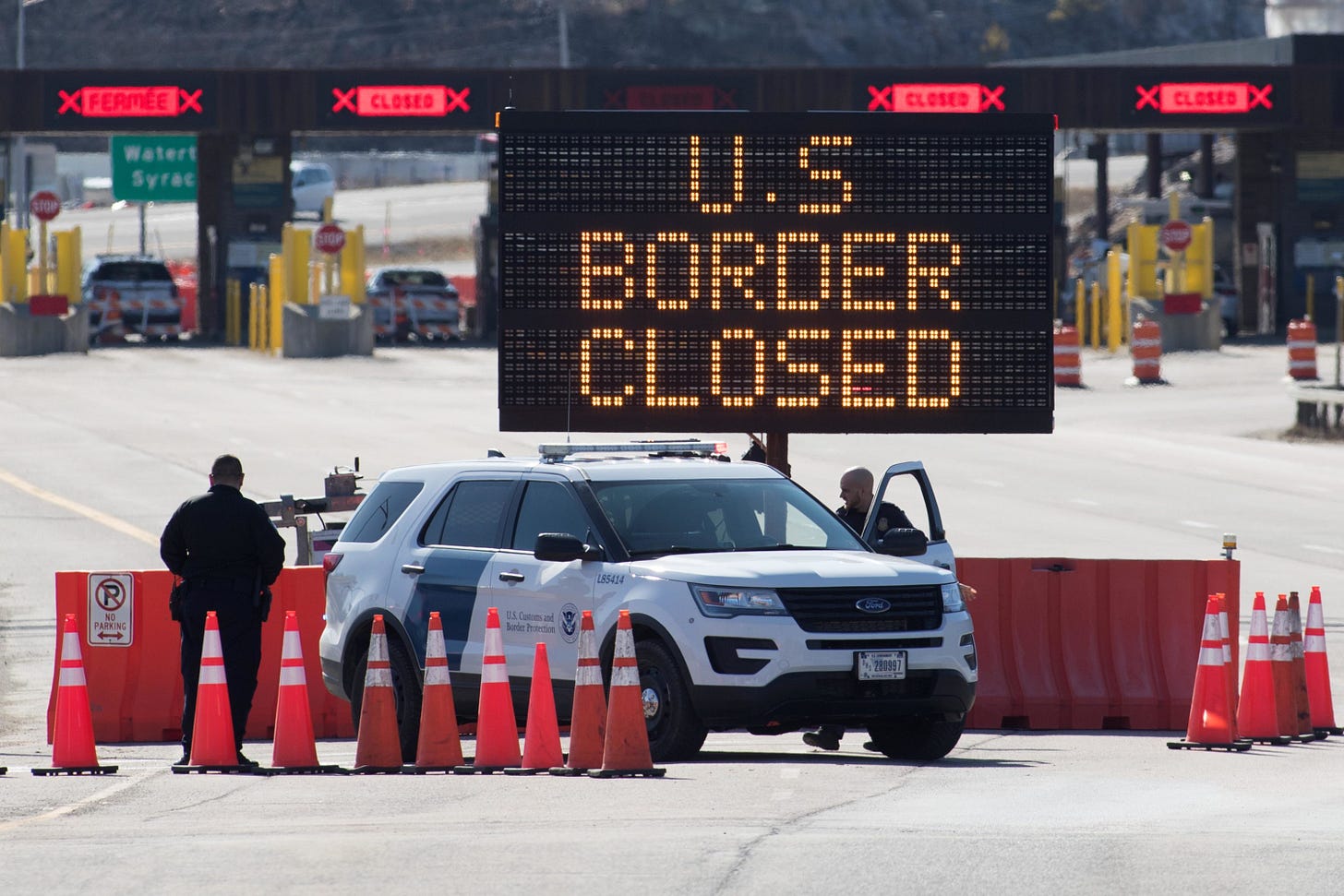For Trump, COVID-19 Is Another Excuse to Limit Immigration
This isn’t the first time fears of disease have caused self-defeating, restrictionist panic

Donald Trump has vanquished the Chinese Virus. No, not COVID-19—the actual disease that continues to spread unchecked in the United States and around the world—just the racist term he invented to cast blame on one of his favorite bogeymen: China. Apparently, the president’s change of heart comes because he’s shocked – shocked! – to learn, “It seems there could be a little nasty language toward the Asian Americans in our country.” Or so he said at Monday’s White House briefing on the virus. On Sunday, however, he had no hesitation to call COVID-19 the Chinese Virus; and on Friday, Secretary of State Mike Pompeo used the ugly term standing from the same podium along with the president. Others in the administration have found even more colorful ways to describe the disease. What’s next, calling it the “Yellow Peril?”
Is this merely another example of Trump dog-whistling to white nationalists in an election year, or is there something even more insidious going on? Stephen Miller, the president’s immigration henchman, helped write his disastrous Oval Office address on the disease, describing the pandemic as a “foreign virus.” Miller wasn’t being sloppy, he meant to plant the seed that this disease was alien. Associating a specific disease with a particular ethnic group has worked in the past to raise fears about immigrants and helped spur calls to cut off immigration from various countries, not just for a medically prudent short term in a pandemic, but permanently.
A virulent smallpox epidemic in San Francisco in 1875-76 led health authorities to order fumigation of all Chinese immigrants’ homes. It did little to stop the spread of smallpox, which infected 1,646 whites in the city and killed more than 400. The city’s top health officer attributed the disease to the 30,000 Chinese laborers living in San Francisco at the time, whom he blamed, with no evidence, for “concealing their cases of smallpox.” The scare exacerbated calls to bar all Chinese laborers from entering the U.S., which culminated in the Chinese Exclusion Act of 1882. The law barred Chinese from immigrating until 1943, but it was the 1965 Immigration Act that led to large-scale immigration from China. By 2013, China had replaced Mexico as the country sending the most immigrants to the U.S.
And Asians weren’t the only immigrant scapegoats for disease. In the early 20th century, during the huge influx of Southern and Eastern Europeans, New Yorkers dubbed tuberculosis “the Jewish disease” and accused Italians of bringing in cholera. The common stereotype associating infectious diseases with new immigrants led to much more aggressive inspections of newcomers, with the federal government taking over responsibility from the individual states in 1890.
In 1892, the federal government opened Ellis Island, the largest immigrant inspection station, and others followed at Angel Island near San Francisco, at the port of Galveston, Texas, and elsewhere. Between 1902 and its closure in 1951, the Ellis Island Immigrant Hospital cared for more than a quarter million patients. Those who had infectious diseases like tuberculosis were sent back to their countries of origin at shipping lines’ expense, which prompted shipping companies to begin assessing travelers before they boarded ships to avoid the potential financial as well as medical risk.
With the outbreak of the misnamed Spanish Flu epidemic in 1918 (it probably started in Kansas), Americans were primed to see immigration restriction as a way to fight disease. Much of the anti-immigrant rhetoric of the era described new immigrants as dirty, disease-ridden, and a threat to the native stock. Unsurprisingly, Congress acceded to popular sentiment, largely shutting off immigration in 1924 by limiting immigration from most countries to 2 percent of their U.S. population in 1890. Consequently, few Spaniards, Italians, Greeks, Poles, Russians (many of whom were Jews) or others from Southern and Eastern Europe, who had come in large numbers between 1900 and 1924, could immigrate until Congress rescinded the quotas in 1965.
It is one thing for nations to impose temporary travel bans to stem the spread of a highly contagious disease, but another to exploit a national emergency to further policy goals that would be difficult to achieve in normal circumstances. Trump has made no secret that he wants to reduce immigration—not just illegal immigration but legal immigration as well. During his campaign, he advocated that before “new green cards are issued to foreign workers abroad, there will be a pause where employers will have to hire from the domestic pool of unemployed immigrant and native workers.” Once in office, Trump endorsed a bill sponsored by Sens. David Perdue and Tom Cotton that would have drastically slashed legal immigration. But even without Congress passing the bill, Trump managed to reduce net legal immigration 70 percent last year.
Trump isn’t alone in believing fewer immigrants would be good for America. Neo-Malthusian groups like the Federation for American Immigration Reform, the Center for Immigration Studies, and many of the anti-immigrant groups in the U.S. think a shrinking population is a good thing. It’s not. Fewer people mean fewer workers and consumers and a contracting GDP. U.S. population growth has already slowed significantly, with the native population having fewer babies and stricter immigration rules making it more difficult for legal immigrants to come here.
And it’s not just the loss of the immigrants themselves that will drive down population. Without immigrants and the children to whom they give birth, the United States would already be below replacement level—which is just what the restrictionists would like to see. COVID-19 may well accomplish what the radical restrictionists and anti-natalists have been wanting for years: fewer immigrants, fewer babies, and a declining American population.
We face difficult times ahead, but it would be wrong to allow fear of any disease to drive us to erect long-lasting barriers against welcoming immigrants and providing asylum and refuge to those who flee persecution, war, and violence.


